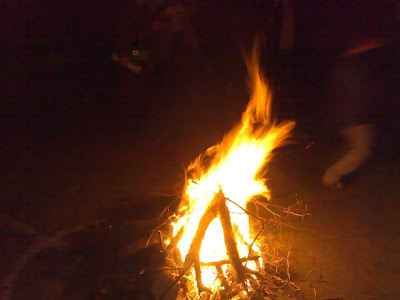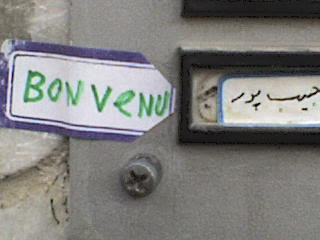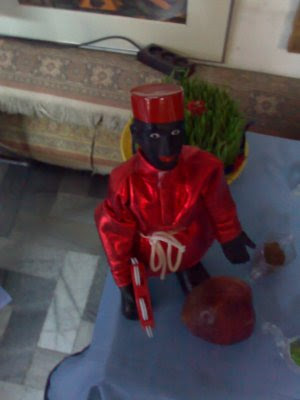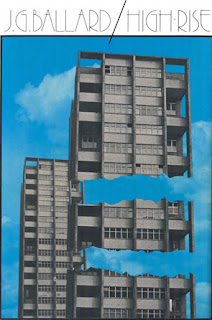 A new order came and a new day
A new order came and a new dayFarvardin 1
3:37:26 AM, Tehran Time
On this time begins the Iranian new year 1386 (2566 with imperial origin), and again it comes another Norooz.
If you are not familiar with the Iranian calendar, it may seem strange to you that the Iranian new year does not start at midnight. The Iranian calendar is a true solar calendar. Being far more accurate than the Gregorian calendar, it begins each year on the vernal equinox as precisely determined by astronomical observations from Tehran (and Kabol). If you want to know when the new year begins in other places in the world, this web page may be useful.
But this Norooz is not an ordinary festival. It is the true symbol of the Iranian culture, and it is so powerful that even the hands of Islam could not eliminate it, although I can assure you they did their best to do so (and still we see the hard struggles of the Islamists today to wipe Norooz off the minds of Iranians, of course to no avail).
Here's a list of some quick facts about Norooz.
Khane Tekani --Home Cleaning
Home Cleaning, or "Khane Tekani", may start as early as the beginning of Esfand (the last month of the Iranian year). It is customary for people to clean their houses before the coming of the new year. During this time, they also buy new clothes, and probably renew their furniture. The point is to start a "new" year. All these activities make Esfand a busy month. The traffic gets much heavier and the Bazaars get a lot more crowded.
Haft Sin Table
"Haft Sin", literally "seven S", is a table with seven major items whose names start with letter "sin" (an equivalent of English S). The seven items are usually:
- sabzeh: wheat, barley or lentil sprouts growing in a dish
- samanu: a sweet pudding made from wheat germ
- senjed: the dried fruit of the oleaster tree
- sir: garlic
- sib: apples
- somaq: sumac berries
- serkeh: vinegar (as far as I know, this has originally been wine which was banned by Islam after the Arab conquest)
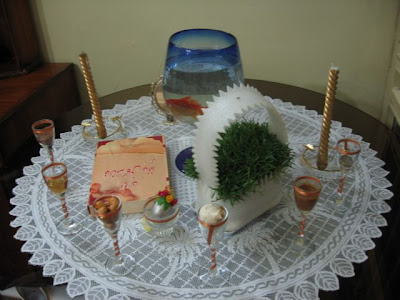 My family's "Haft Sin"
My family's "Haft Sin"As I have already pointed out in one of my previous posts, the stories (such as in Shahnameh) say Norooz was the day in which Jam flied in the sky with the help of the divs in his service, and after that the day was called Norooz ("Novroch", in Pahlavi). "No" means "new" and "rooz" means "day", so Norooz is a "new day", marking a new era as Jam brought new order to the world (and was called Jamshid after that, because as he flied in th sky everyone saw him shining in light; "shid" means "light").
And today, again, a new order came and a new day. As Iranians always say on this day:
Har roozetan Norooz
Noroozetan pirooz
May your everyday be Norooz,
and your Norooz be happy!
And today, again, a new order came and a new day. As Iranians always say on this day:
Har roozetan Norooz
Noroozetan pirooz
May your everyday be Norooz,
and your Norooz be happy!
